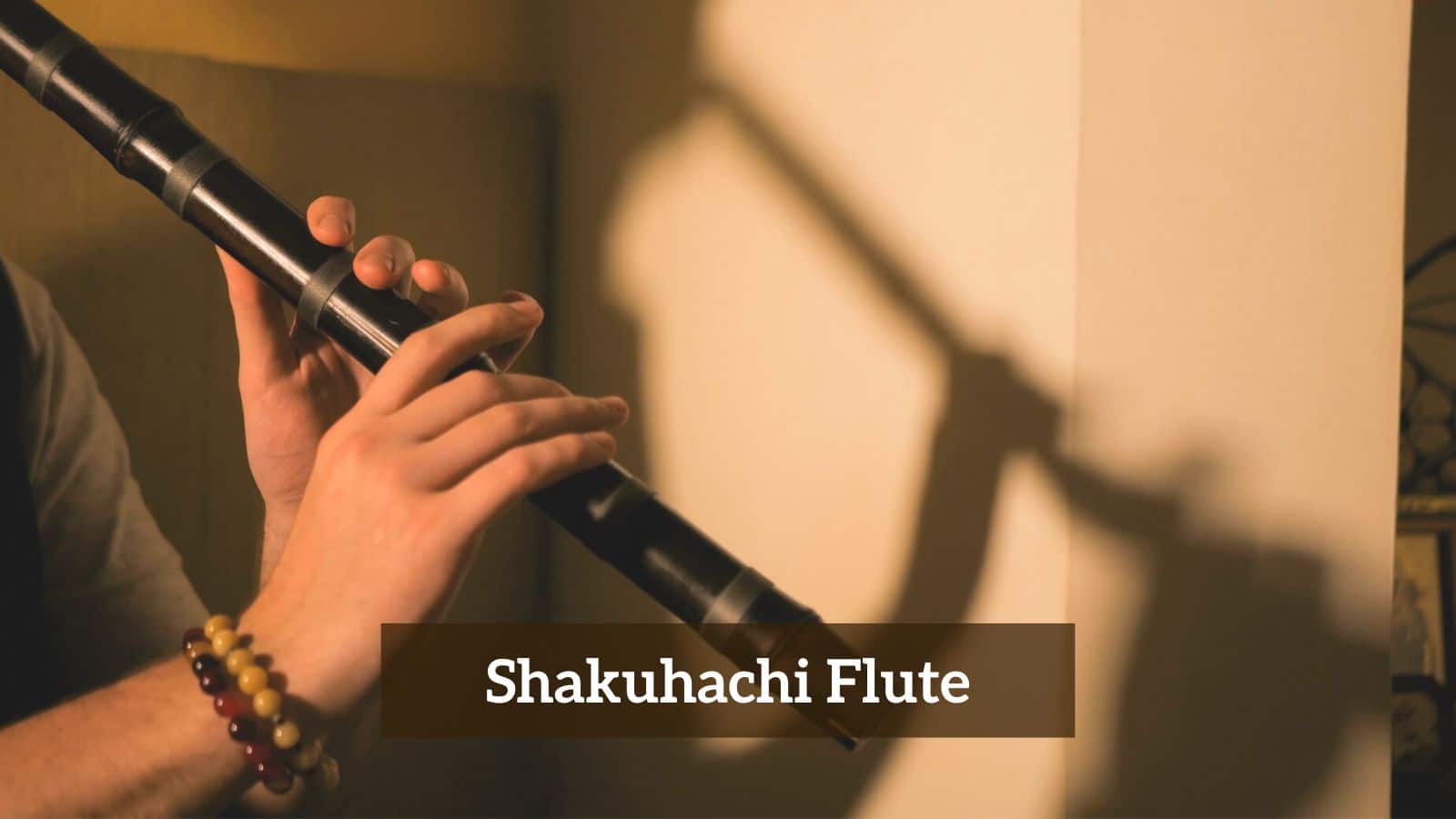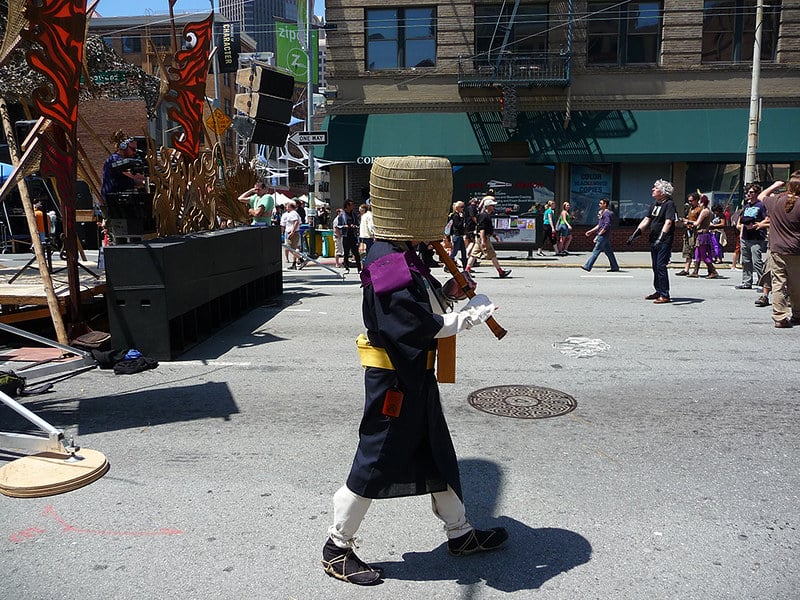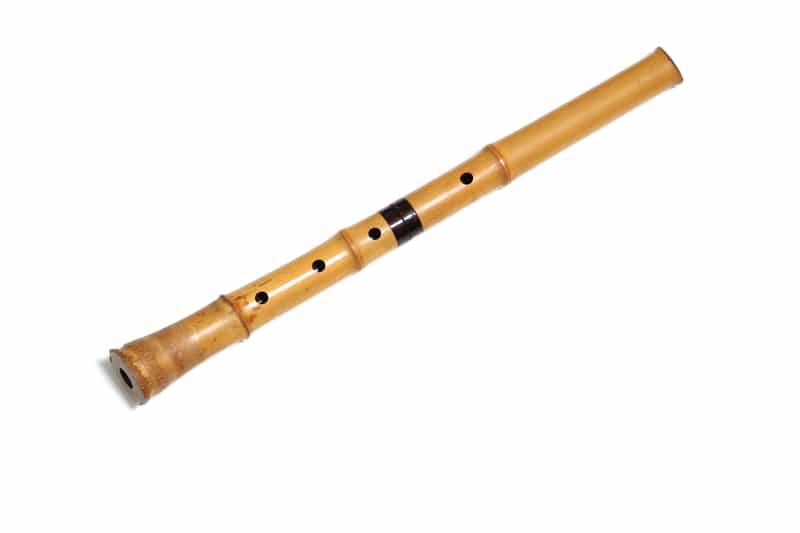
What is a Shakuhachi Flute?
There are many different kinds of flutes that exist all over the world. Most people are familiar with the C flute, most commonly made from metal and played in schools, orchestras, wind ensembles, and solo performances.
However, this kind of flute is actually relatively new compared to some of the more traditional types of flutes that exist. One such example is the shakuhachi.
Shakuhachi Flute
The shakuhachi is a Japanese end-blown bamboo flute that has been used for many centuries in traditional Japanese music, and is also played today in various types of contemporary music. It is a unique instrument that has a distinct sound, character, and history.
How Old is the Shakuhachi?
The origins of the shakuhachi can be traced back to the Heian period in Japan, around the 8th century. This was a period where Japan’s native culture flourished, as the country was generally moving away from Chinese influence.
Though the bamboo flute did originally come from China, the way the instrument is played and in what context is uniquely Japanese. The shakuhachi was initially played in ensembles called Gagaku, which performed court music at the imperial palace.
However, eventually the instrument was phased out of these ensembles, most likely because it was not able to compete against some of the louder instruments.
The shakuhachi went out of style for some time after that, at least as far as historians can tell. Around the medieval era, however, it made a resurgence. This time, the shakuhachi was used as a meditation tool by Zen Buddhist monks.
These monks, known as “komuso,” would travel from temple to temple playing the shakuhachi as a form of spiritual expression. They would also perform the shakuhachi on the streets as beggars, as they had renounced all material wealth.
Over time, the shakuhachi became associated with the “Fuke” sect of Zen Buddhism and its use was restricted entirely to these monks. The “Fuke” shakuhachi is now the most common form of the instrument.
However, the “Fuke” sect was eventually banned in Japan after the Meiji Restoration of 1868. As a result, the shakuhachi was also banned in Japan for a short period of time.
When it was finally permitted again, it was only as an accompaniment instrument, and it took quite some time for it to be reincorporated into traditional Japanese music.
What does a shakuhachi look like?
The shakuhachi is made from a single piece of bamboo that is cut, dried, and hollowed out. The bore of the instrument is tapered, providing the shakuhachi its distinct sound. The length of the shakuhachi is actually how the instrument got its name.
“Shaku” is a no longer used unit of measurement, while “hachi” means “eight.” Thus, the traditional shakuhachi is equivalent to one “shaku” plus eight-tenths of a “shaku.”
In today’s measurements, a shakuhachi can range from 1.3 to 1.8 meters, and the length of the instrument affects the pitch and timbre of the sound produced.
How is the shakuhachi played?
Like all wind instruments, playing a shakuhachi involves using the lips, breath, and fingers to produce sound.A player blows into the mouthpiece, which is located at one end of the instrument, and covers and uncovers the finger holes to produce different notes.
Unlike with the modern concert flute, the player blows directly into the instrument rather than across it (this is why it falls under the category of end-blown). The shakuhachi plays a pentatonic scale, meaning its basic scale contains five notes, giving it a unique, mournful sound.
This contrasts once again with the concert flute, which has a diatonic scale of eight notes or a chromatic scale of twelve. To make up for the instrument’s lack of pitches, shakuhachi players experiment with cross-fingerings and half-holing to play more notes.
Additionally, players can change their embouchure to produce different timbres and tone colors even on the same pitch, broadening the spectrum of possibilities on the instrument.
Typically, the instrument can cover about two and a half octaves, though very competent players may be able to reach a larger range.
While the shakuhachi is a distinctive and beautiful instrument, it is also quite difficult to play. Like most flutes, it takes years of practice and dedication to master, and the instrument requires a great deal of breath control and finger dexterity.
Additionally, it will not necessarily be easy for someone who plays an orchestral flute to pick it up, as the fingerings and sound production are quite different.
However, for those who take the time to learn and play the shakuhachi, the reward is a beautiful and powerful form of musical expression.
Where can I hear the shakuhachi?
The shakuhachi is used in a variety of musical styles, including traditional Japanese music such as “honkyoku”, which is the solo repertoire of the komuso, as well as in contemporary music styles such as jazz and world music.
In traditional honkyoku, the shakuhachi is played in a meditative and improvisational manner, with the player sometimes playing for hours at a time.
In contemporary styles, the shakuhachi is used to add a unique character and flavor to the music, as well as to explore new musical possibilities.
In recent years, the shakuhachi has gained popularity outside of Japan, with musicians and enthusiasts from around the world studying and playing the instrument.
There are now international shakuhachi festivals and workshops, bringing people together to share their love for the instrument.
There are also numerous recordings of shakuhachi music available, offering interested listeners the opportunity to experience the unique sound of the instrument.
In conclusion, the shakuhachi is a remarkable instrument with a rich history and special sound.
From its origins as an instrument of the court to its use by Zen Buddhist monks to its incorporation into contemporary and world music, the shakuhachi has proven to be a versatile and enduring instrument.
Whether you are a musician looking to add a new sound to your repertoire or a music lover looking to experience something new, the shakuhachi is definitely worth exploring.


